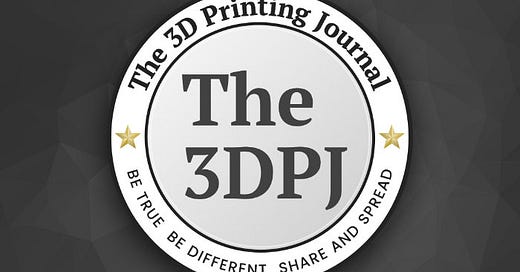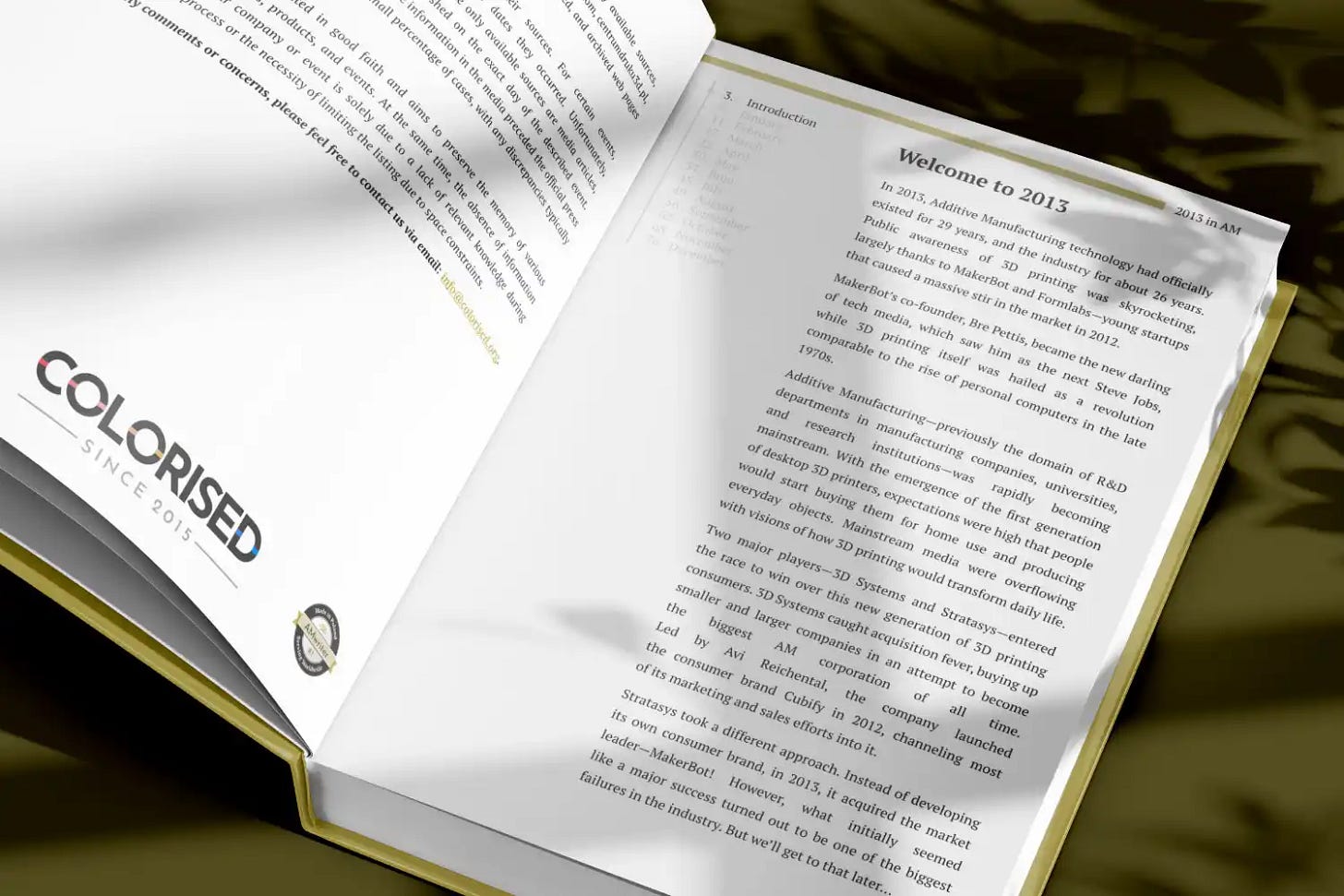Atomic Layer of the Day:
The launch of the new Bambu Lab is behind us, and all the leaks have been confirmed. The only new information is the pricing, which is also pretty much what everyone expected. People's reactions — yes, you guessed it! Generally enthusiastic, except for one thing.
Everyone hates the laser head.
Overall, the H2D seems like a promising 3D printer. I'd make a historical analogy: just as the Bambu Lab P1 and X1 were ultra-modern counterparts of the Zortrax M200 from 2013, the H2D is like an Ultimaker 3 from 2016.
It features two print heads, better optimization for printing with challenging materials (especially TPU, which is gaining popularity), even higher precision and accuracy, a larger build area (350x320x325 mm), and a modern AMS station with a reportedly new "drying — not heating" logic for filaments.
In short, if the things presented during today's launch work as Bambu Lab claims, the H2D will represent a significant technological leap. It will be subtle but important, much like the transition from the single-head M200 to the dual-head U3 seven years ago. Really nice.
Curious about the prices?
H2D = €1,962.83 EUR
H2D + AMS = €2,272.92 EUR
H2D + AMS + LASER (10W) = €2,893.08 EUR
H2D + AMS + LASER (40W) = €3,616.62 EUR
And here's the first issue. All 3D printers are available for immediate purchase, except for the most affordable version, which will only be available from June 2025.
How is it possible that the most advanced versions are ready for sale, but the cheapest one isn't? It's a sales strategy — a bit of business "Sun Tzu." The first wave of Bambu Lab lovers will grab the second and third versions (AMS and AMS + laser), while regular users will order the cheapest, "naked" version two months later.
Now, onto the main issue: the laser head.
Honestly, no one likes it. Even those who love everything about Bambu Lab are cautious about this feature. It seems like only Bambu Lab sees the benefits of having laser engraving and cutting capabilities in a 3D printer.
This function isn't new — it's been offered by several companies before since 2014-2015: Zmorph, XYZPrinting, Panowin, and Anycubic (Mega Pro model). Currently, the most notable brand in this field is Snapmaker.
3D printing and laser engraving & cutting are a niche market, comparable to 3D printing with pastes and silicones — options that have been available in various systems for many years but have seen very limited adoption. Laser engraving and cutting is a separate industry — a distinct specialization, just like CNC milling. While it is technically possible to combine these technologies into a single system, each typically works best when operated separately.
In other words: combining two different manufacturing techniques — AM and laser engraving & cutting — doesn't make either better. On the contrary, they often interfere with each other.
At this point, it seems like Bambu Lab was under significant pressure to innovate, and due to a lack of more reasonable options, they introduced the laser feature. Which no one expected or asked for.
Personally, it's not an issue for me. I've never used a laser in my work, even though I've owned three 3D printers with such functionality (Panowin F1, Zmorph VX, and Zmorph Fab). If I ever need the H2D, I'll get either the "naked" version or the one with AMS. If I receive the full version as a gift, I'll use the laser only for a special extra charge.
I believe many people share my opinion. The H2D laser will be an additional option that people will rarely use.
This brings up a critical problem for Bambu Lab... When random users start laser engraving, it may eventually end badly.
There are two main reasons:
Maintenance: cutting certain materials (plastics or wood) produces fumes and residues that can accumulate on the device's components. Given that the H2D is equipped with numerous optical systems, the more laser engraving is done, the worse they will perform. Bambu Lab has actually addressed this on their website, with a ton of photos showing what and how to clean after engraving to avoid damaging the device through neglect: wiki.bambulab.com
Fumes and safety: who here has never cut plastic with a laser but knows the consequences? I'm talking about the harmfulness of the fumes. I found this on X:
OK, since the laser thing is happening with this Bambu H2D, here’s a list of materials to avoid engraving or cutting with a laser:
ABS: emits highly toxic hydrogen cyanide gas — dangerous even in small amounts.
PVC: releases chlorine gas — corrosive to lungs and the printer.
Fiberglass/carbon fiber: just don't.
PTFE: releases fluorine gas — lethal.
Source: PheoniX
Supposedly, Bambu Lab has a highly sophisticated filtration system to ensure safety. Snapmaker has been producing similar systems since 2017, and its users are still alive. However, there are many casual users among Bambu Lab's customer base who may not be aware of these dangers. Bambu Lab is a consumer-grade 3D printer, and consumers are not necessarily engineers or materials experts.
So, Bambu Lab might face unnecessary problems with this. And I'll say it for the third time — no one asked for this.
I just hope that aside from this laser mishap, the 3D printer itself will turn out great and elevate the user experience to an even higher level. Working with TPU is particularly exciting.
So let's forget about lasers and enjoy 3D printing!
Atomic Layer from the Past:
03-25-2019: CD3D unveiled SKAFFOSYS bioprinter and announced the creation of the "Open Bioprinting Cluster".
‘2013 in AM’ - brand new history book! GET IT NOW!
News & Gossip:
Desktop Metal wins court ruling against Nano Dimension!!! Few hours ago Desktop Metal announced the Delaware Court of Chancery ruled in its favor, ordering Nano Dimension to complete their merger. The court found Nano breached the agreement and must finalize a national security deal within 48 hours. Closing must occur by March 31, though Desktop Metal may extend the deadline. The ruling is immediately appealable.
UltiMaker, in partnership with the SME Education Foundation, launched the MakerBot Scholarship, offering $20,000 to support students from underrepresented communities pursuing STEM degrees. Part of the MakerBot Gives Back Initiative, it aims to empower future innovators by providing financial aid and 3D printing resources to students and educators.
Ruben Nigaglioni has joined the Raise3D team as Sales Director. Previously, Nigaglioni served as Head of Sales at Nexa3D and EnvisionTEC. Good luck!





